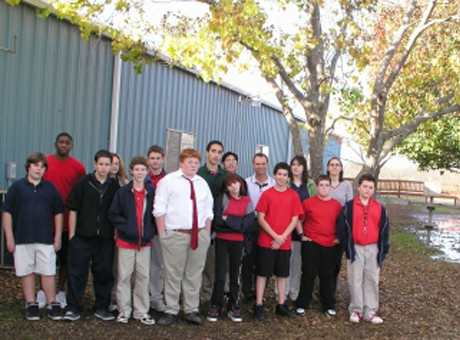Phoenix Charter School InvenTeam
Poor drainage at the Phoenix Charter School had caused a large puddle to cover most of its school grounds. Since the students liked spending time outdoors, they were tired of this puddle occupying most of the space in their schoolyard. The Phoenix Charter School InvenTeam decided to conserve the water in this area and create a water garden, instead of simply creating a water drain to eliminate the water. The team sought an environmentally appropriate way to circulate the water in the water garden, which led to an easy-to-install, wind-powered water pump. The team created an aesthetic Archimedes Screw Pump capable of pumping 1500 gallons of water and raising it three feet. The pump is wind-powered by a turbine and uses only 100 watts of energy. It is seven feet long with a seven-inch diameter, turns at 120 rpm, and is set at a 30-degree angle. The Phoenix Charter School InvenTeam decided to utilize the wind to power the pump. However, they discovered wind power was not enough to fuel the pump. So, they created a turbine system which would enable them to store energy from excess wind that could then be used on less windy days. The team split into three groups to focus on different aspects of the invention. The students worked with mentors from L-3 Communications, Al Swanson, Willard Toole and Bill Patterson, to understand wind turbines and mechanical and electrical engineering. The team researched local rainfall amounts and the permeability of the ground to determine how large to make the water garden. The team discovered it was more beneficial to store all of the energy in a battery. They decided to use a factory-made turbine and invent their own pump. The final design used a screw inside a clear plastic cylinder that moves as a single unit. With Swanson's help, the team created a screw using a pool hose wrapped around a pipe. The Phoenix Charter School InvenTeam plans to landscape their schoolyard and install the pump. The students first need to decide between two turbine models to create the finished product. The team also hopes to see the pump used at a local museum and local public schools.


